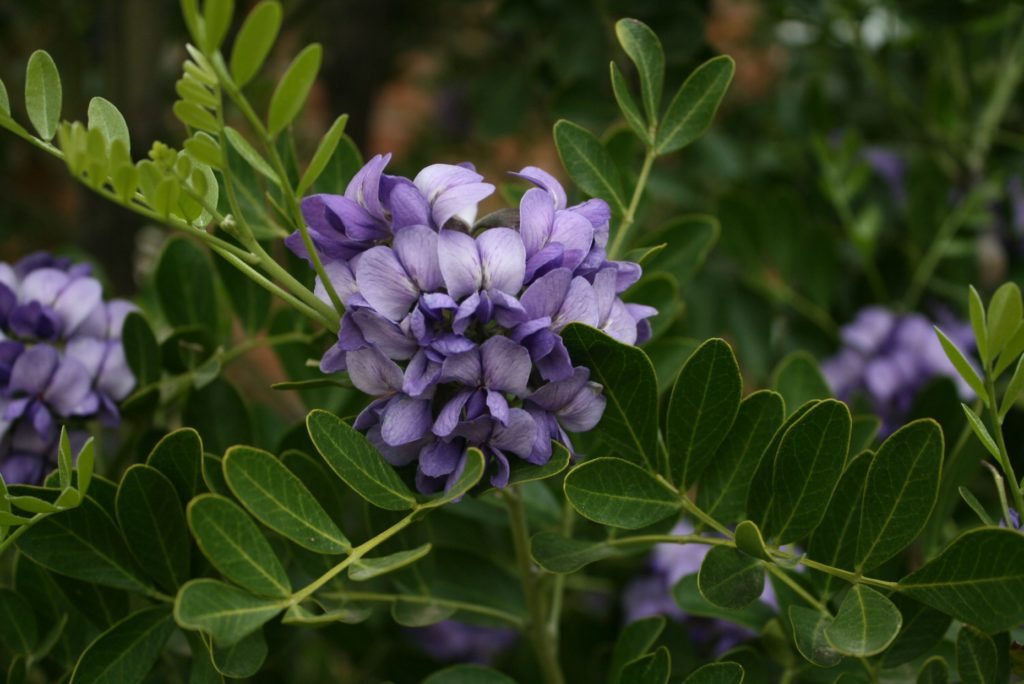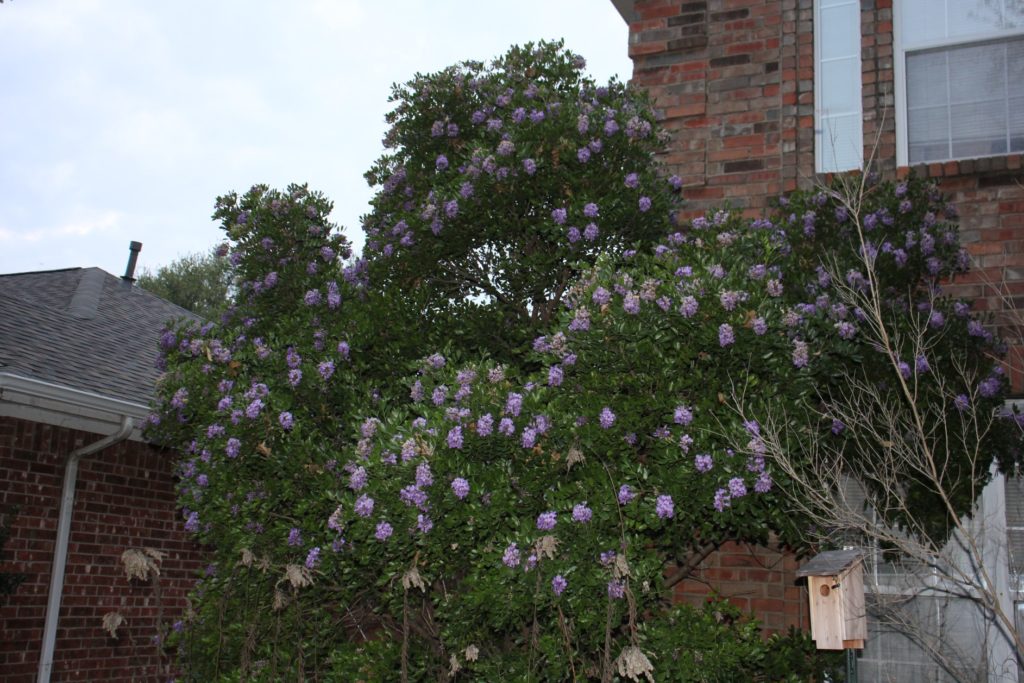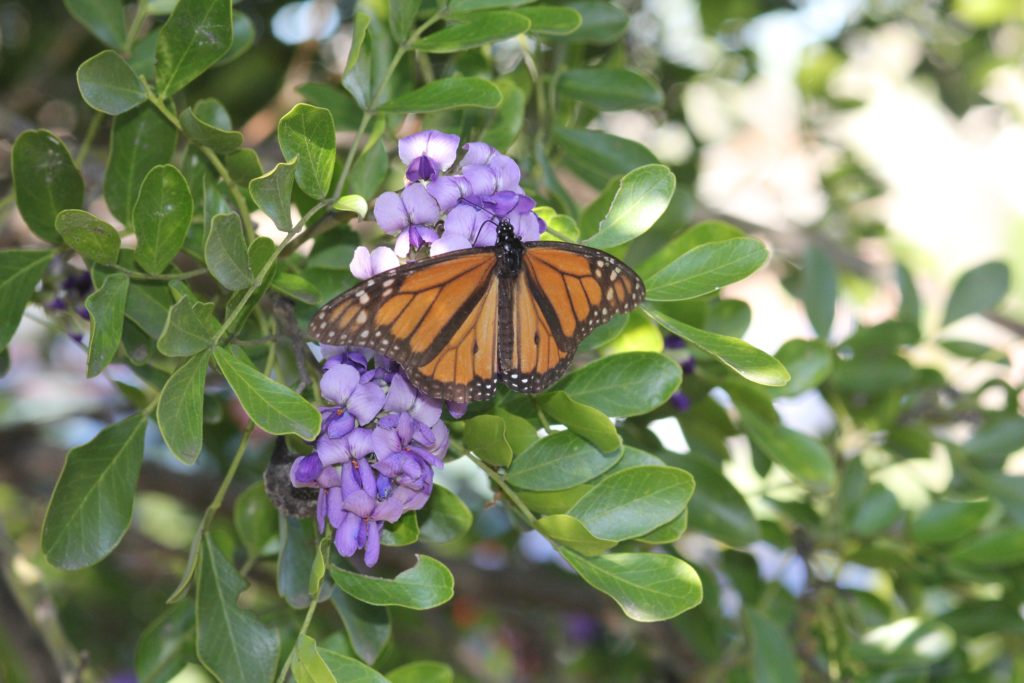
When I first moved to Texas, back in 1996, Texas Mountain Laurel had a different formal name and was considered unreliably cold hardy in the Dallas area. The Heard Museum had a couple of specimens in sheltered locations that I watched grow and survive for several years before buying one of my own.
Things change. What was Sophora secundiflora is now Dermatophyllum secundiflorum, and Texas Mountain Laurel (not a true laurel) has become one of the staples of native landscaping in the Dallas area. The Heard still has some in its front gardens, and mine has grown into a magnificent shrub.
It’s been a while since we had an especially harsh winter, and I might still try to cover mine if we were getting down into very cold winter temperatures, but we’re not.

I love the extravagant display of early spring blossoms it puts on, and if the sight of it is not enough to attract your attention, the heavy aroma of grape soda the flowers emit might just catch you by the nose instead. Mine is planted by the front corner of the house, and I can smell it when I open my car door at the curb. It welcomes me home, even in the dark.
I also love its dark, glossy, evergreen foliage, dressing up the drab brick corner of my house all year long. Pollinators flock to the heady aroma of its flowers, and almost everything seems to find them useful: beetles, Honeybees, native bees, butterflies, moths, Syrphid Flies, and more gather at this early spring source of sustenance.
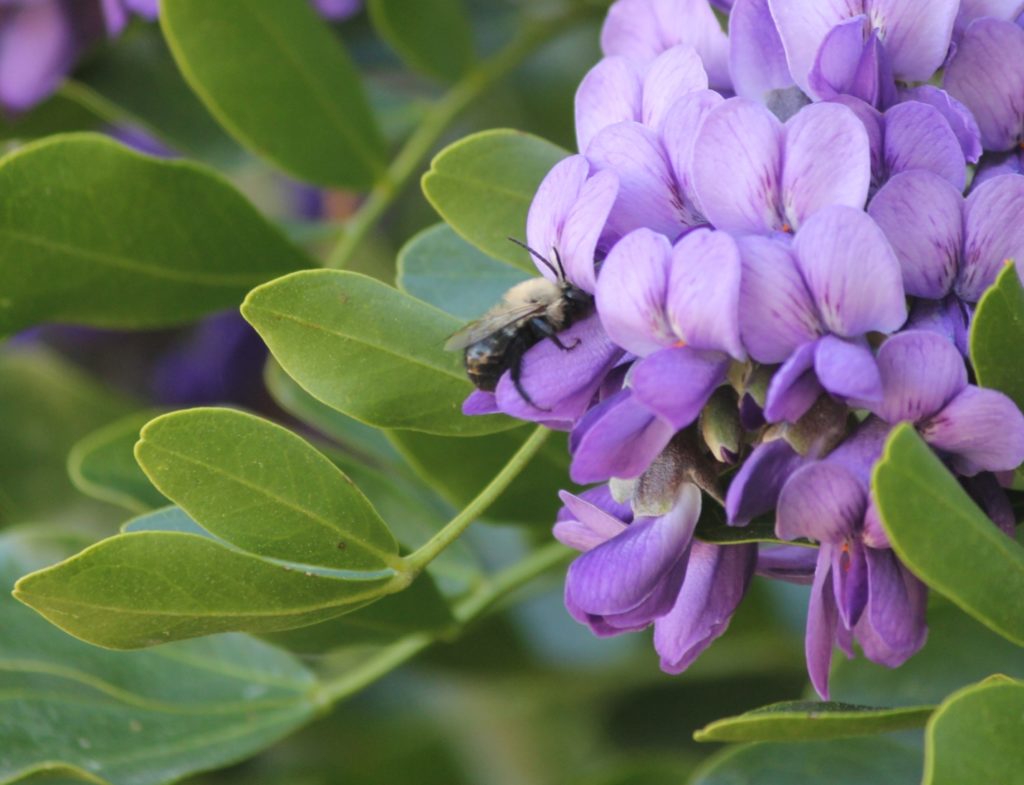
Because this plant is in the pea family, its flowers have a “banner” and “keel”, with two petals sticking up as the banner, and two more folded together to form the keel. The bright orange stamens are tucked away inside the keel, and only the pollinators that know how to pry the keel open and expose the stamens can collect pollen from this plant.
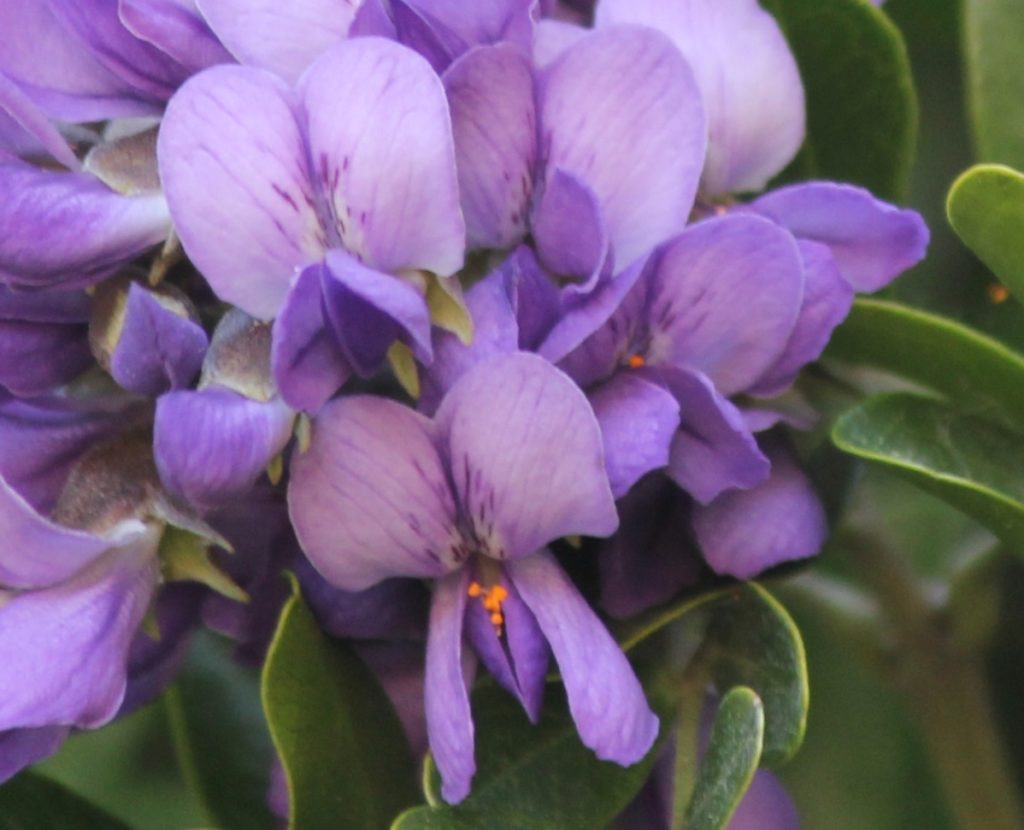
Blue Orchard Bees, Osmia ribifloris, are some of the most reliable visitors to Texas Mountain Laurel, and it’s fun to watch these gentle solitary metallic blue bees work their way through each blossom. They transfer the bright orange pollen to their underbellies for transport.
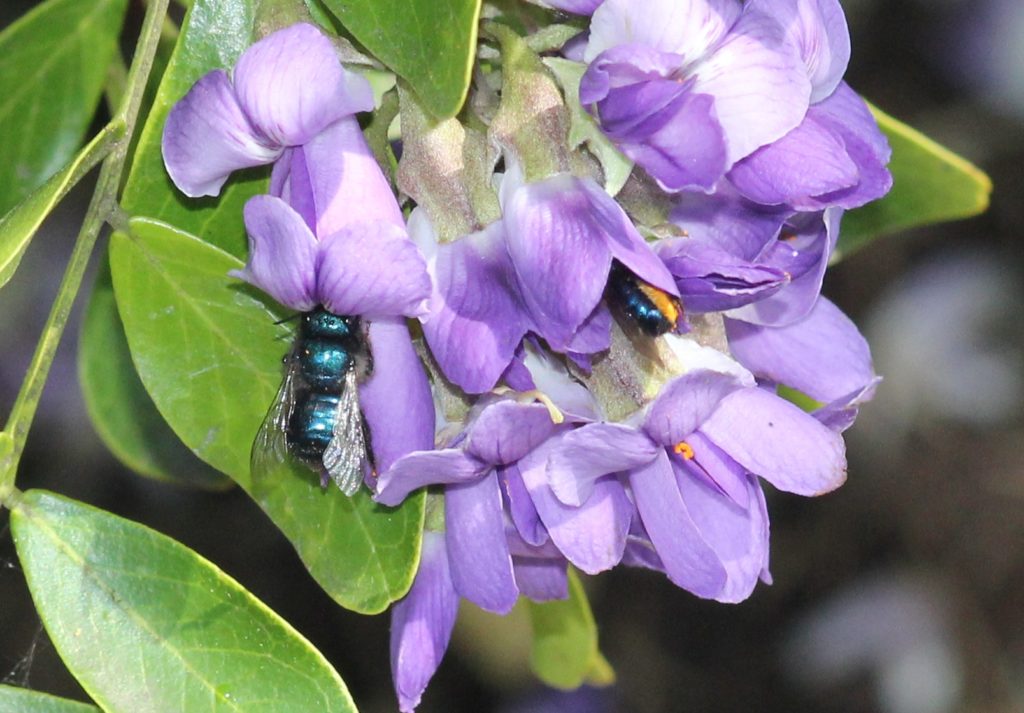
Other bees, like the weird-looking Xylocopa tabaniformis, the Horsefly-like Carpenter Bee, love the blossoms too. Common Eastern Carpenter Bees and Southern Carpenter Bees also make appearances. Honeybees are ubiquitous when the plant is blooming.
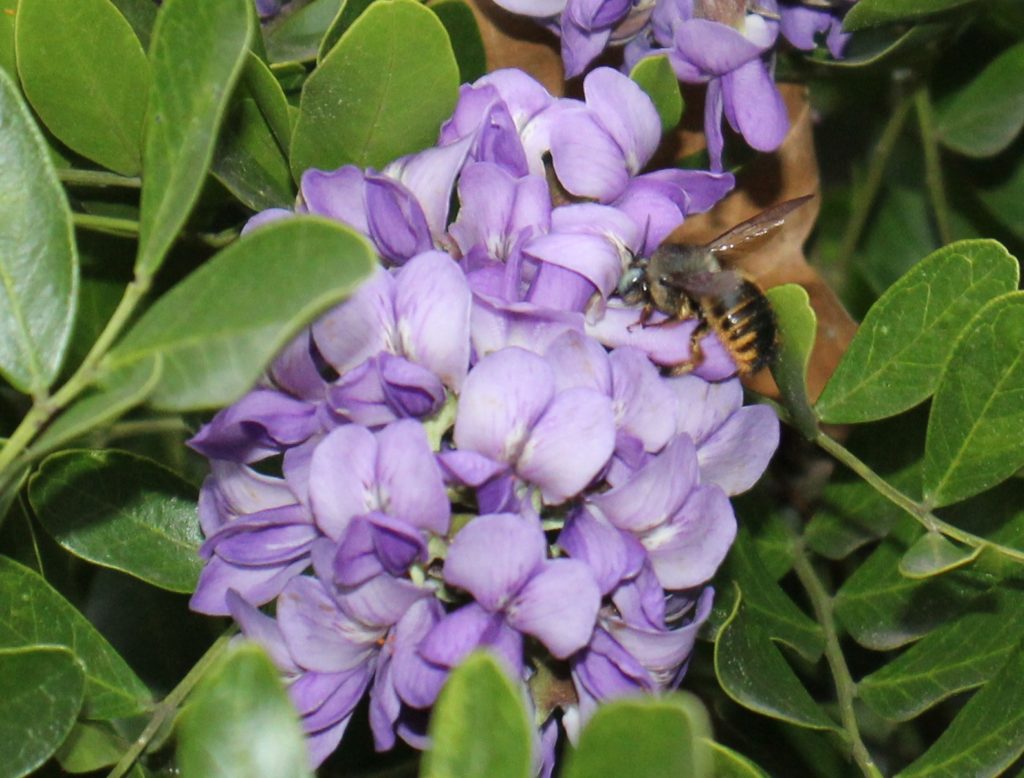
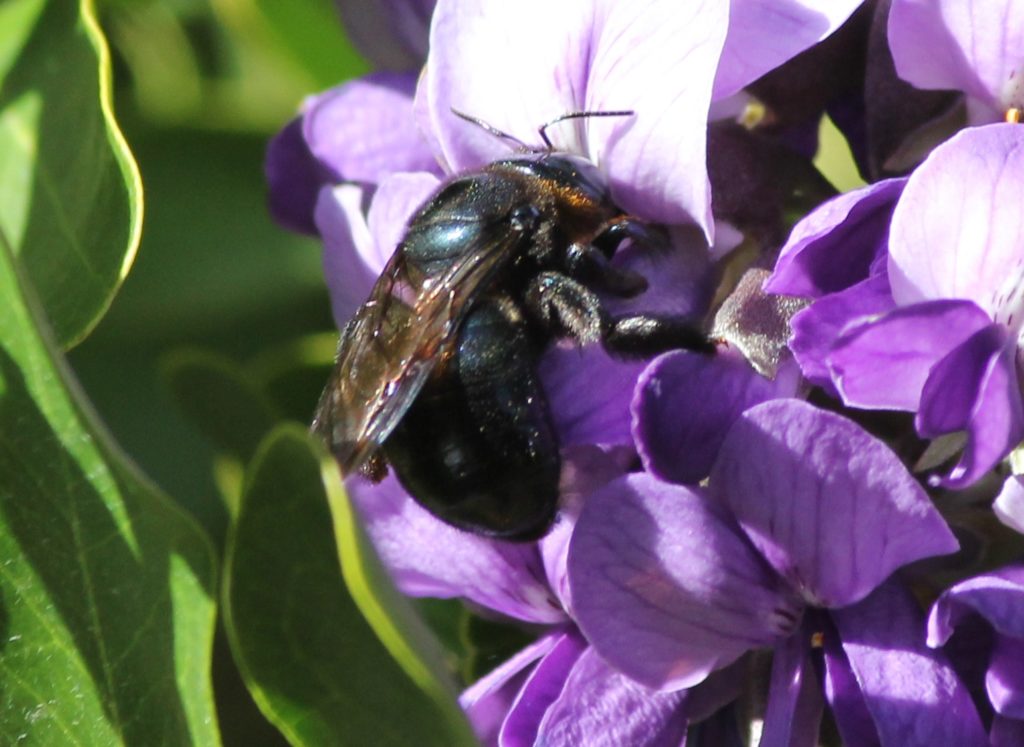
Butterflies like the Monarch, Red Admiral, and Swallowtails gather nectar from the flowers, and because the flowers grow in clusters, the butterflies often stay in one place long enough for a quick picture.
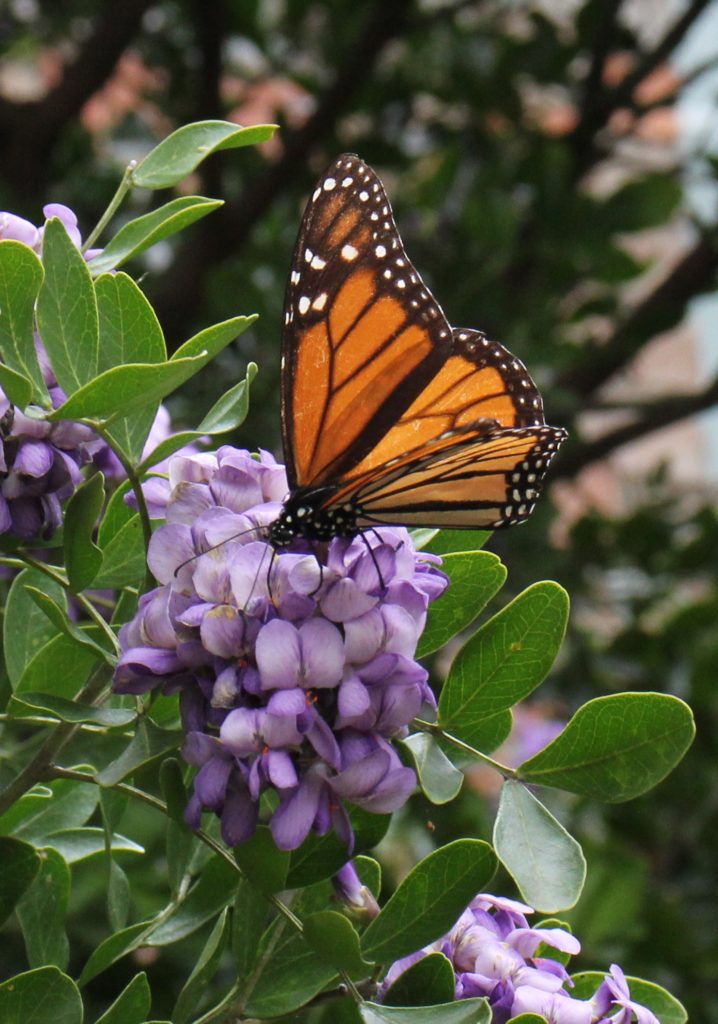
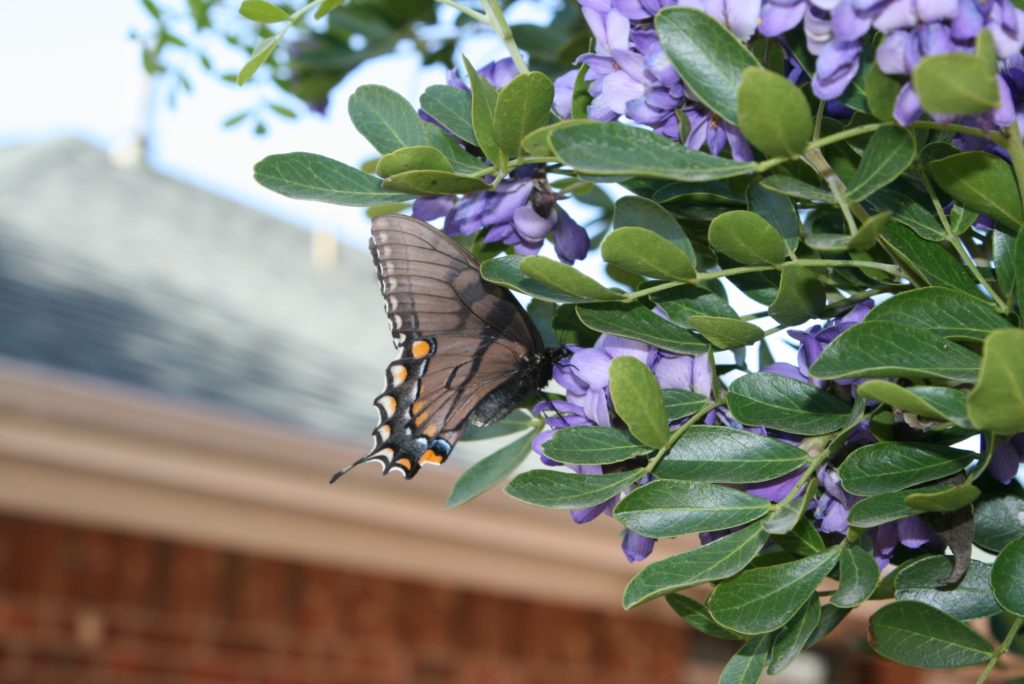
We even had a pair of Bluejays build a nest under the dense cover of our Texas Mountain Laurel last year. Bees, butterflies, heady aroma, lavish display, evergreen foliage, nesting cover? What’s not to love?
